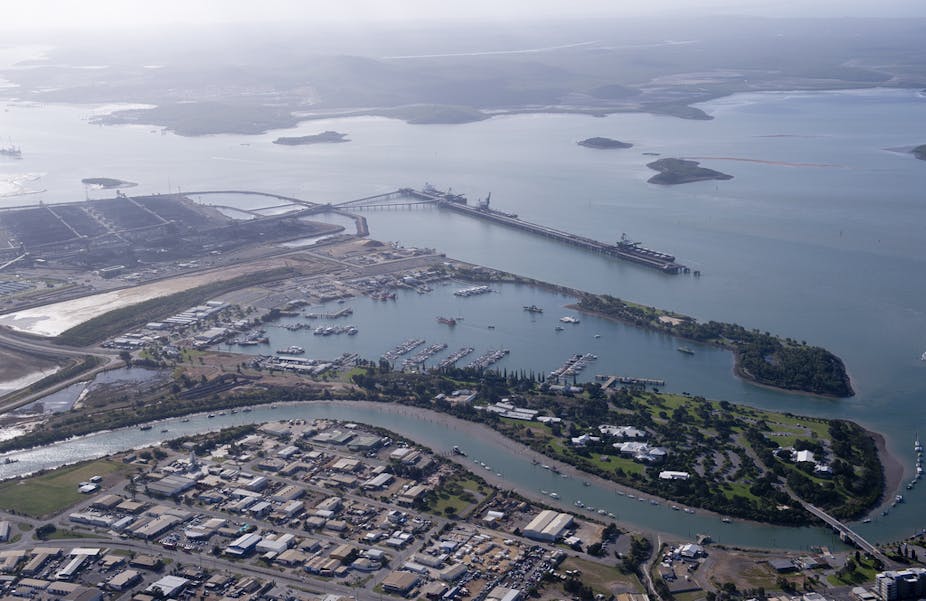A long-awaited report on environmental failures at the biggest port along the Great Barrier Reef coastline and today’s federal budget may not seem connected – but if you read the report, it’s clear just how important this budget will be for Australia’s environment.
About 16,000 public servants are predicted to lose their jobs after this budget, and environmental staff have been named high on the list in several news outlets.
My contacts within the Department of Environment say they expect more than 20% of their staff to go. From my personal knowledge, the department already has very few officers with sufficient skills, expertise and experience to oversee complex compliance monitoring programs for major projects.
Why does that matter? And what’s the connection to an independent review into what went wrong at Gladstone harbour, released on Friday last week but largely overshadowed by budget news?

That review was set up by Environment Minister Greg Hunt, after years of local concerns about an outbreak of diseased and dead fish, turtles and dugongs within the Great Barrier Reef World Heritage area in 2011, and questions about whether that was connected to a leaking bund wall meant to contain sediment dredged from the harbour.
The review found that “insufficient resourcing for Department of the Environment monitoring compromised the Australian Government’s ability to adequately ensure compliance” with environmental conditions set on the harbour dredging project at Gladstone.
It also called for proper resources for future environmental monitoring, so that what happened at Gladstone doesn’t happen elsewhere in Australia. Its recommendations included:
- Resource levels within the department of the environment should be sufficient to ensure adequate monitoring capacity, including for active participation in post-approval technical committees; and
- Increased resourcing being applied to monitoring and compliance in the department of the environment should be maintained as a matter of priority.
So this is a key issue in today’s budget. How many jobs will go at the Department of Environment, and who will be left to act as watchdogs for Australia’s environment?
The review results
Despite constraints on what it investigated, the Independent review of the bund wall at the Port of Gladstone by a three-member expert panel has been highly critical of the environmental management that operated during the Western Basin dredging program in Port Curtis, Gladstone, from 2010 to 2012.
The Australian’s Graham Lloyd succinctly summed up the report’s key findings:
A key part of the Gladstone Harbour dredging program for the A$35 billion Curtis Island liquefied natural gas export hub has failed due to bad construction, inadequate monitoring and poor environmental oversight by state and federal governments
Some of the strongest criticisms in the review were of:
- The design and construction of the bund wall “did not meet industry best practice”;
- The location of monitoring sites, which were “inadequate to identify and then assist in managing discharge from the bund wall”;
- “Inadequate” oversight of compliance monitoring by the federal government’s Department of the Environment;
- A generally fragmented, uncoordinated and ineffective oversight of the dredging program by the federal and Queensland governments.
The review made 37 findings and 19 recommendations. Environment Minister Hunt says his department has already started to address some of the findings, including with “a significant increase in compliance monitoring staff numbers”, and a review of all compliance and enforcement procedures due by 30 June. Hunt will respond to the report by 1 July.
It’s important to note that the review was set up with a very narrow focus and terms of reference, only looking at the bund wall and not the broader dredging program.
Its criteria also excluded consideration of environmental effects of the leaking bund wall, including on the health of local marine life, or the environmental impacts of the dredging itself.
So the inability of the independent panel to examine ecosystem health impacts of the leaking bund wall basically hobbled this review from the outset.

